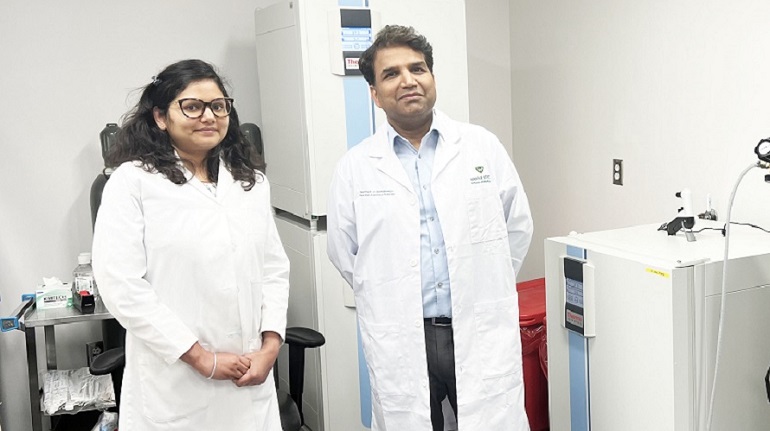
Using cutting-edge molecular biology and cellular techniques, researchers at the Wayne State University School of Medicine have provided evidence that depletion of a certain protein in the body can treat age and diabetes-induced retinal diseases.
The protein, called vascular cell adhesion molecule, or VCAM1, intercedes the adhesion of white bloods cells’ lymphocytes, monocytes, eosinophils and basophils to vascular endothelium and induces pathological retinal angiogenesis, which can lead to blindness. VCAM1 has been linked to cancer. Diabetic patients have a high quantity of the molecule in their eyes.
Associate Professor of Ophthalmology, Visual and Anatomical Sciences Nikhlesh Singh, Ph.D., is the principal investigator on the project.
“Retinopathy of prematurity, wet age-related macular degeneration and diabetic retinopathy are the leading cause of blindness in different age groups. In these diseases, abnormal blood vessels are formed, which extend to the retinal surface and vitreous by creating sprouts and branches, which, if not treated, result in blindness,” Dr. Singh said.
The open-access findings, “Vascular cell-adhesion molecule 1 (VCAM-1) regulates JunB-mediated IL-8/CXCL1 expression and pathological neovascularization,” are published in this month’s issue of Communication Biology, a journal by Nature Press.
Members of the Singh lab study the pathobiology of proliferative retinal disorders that result from the development of abnormal blood vessels on the retinal surface using human primary cell culture and animal-based models.
Conventional therapeutics for these diseases are effective, but are often associated with macular edema, reduced night vision and other side effects, Dr. Singh said.
“Despite these reports, nothing is known regarding the role of VCAM-1 on these retinal diseases. In the present publication, we have demonstrated that VCAM-1 controls angiogenesis in human retinal microvascular endothelial cells by increasing the expression of IL-8, a potent promoter of angiogenesis,” Dr. Singh said. “Our findings in a murine model of oxygen-induced retinopathy show that lowering VCAM1 levels reduces aberrant blood vessel development in the retina. These findings imply that VCAM1 antagonism could be a promising therapeutic strategy for proliferative retinal disorders.”
The study’s first author is Geetika Kaur, Ph.D., a postdoctoral fellow in Dr. Singh’s lab.
“She found a significant association between proliferative retinal disorders and VCAM1 expression. She employed proteomic and transcriptome methods to assess VCAM1's significance in proliferative retinopathies. She studied the function of VCAM1 and its signaling on aberrant blood vessel growth in the eye, which leads to blindness, using both human retinal endothelial cells and a mouse model of proliferative retinopathy,” Dr. Singh said.
For more information on the research, visit www.nsinghlab.med.wayne.edu